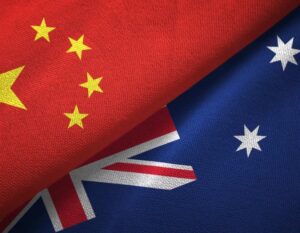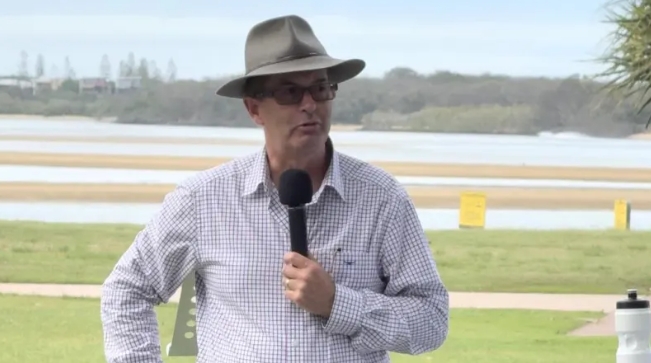The nature of Chinese investment into Australia is shifting away from traditional acquisitions and towards greenfield investments, according to the latest Demystifying Chinese Investment in Australia report from KPMG Australia and The University of Sydney.
Key findings
- 11 deals were recorded in Australia in 2024, worth a total of $1.3 billion.
- 86 percent of the total investment was in mining, and 84 percent of the money flowed to Western Australia.
- Chinese investment in Australia remains low compared to the highs of the 2010s boom and the growth of China’s overall foreign investment, which is focus on Belt and Road Initiative countries.
- Asia and Europe together accounted for more than half of all outward direct investment, while Sub-Saharan Africa saw the sharpest growth in investment.
Chinese investment in Australia increased 43 percent to AU$1,312 million in 2024 – up from AU$917 million in 2023. Eleven completed transactions were recorded. However, despite the increase, 2024 had the third-lowest investment value and number of transactions since 2006, only higher than 2021 and 2023.
The continued low level of investment in Australia contrasted with the growth of China’s overall global Outward Direct Investment (ODI). China’s Ministry of Commerce reported a total ODI volume of US$144 billion in 2024, an increase of 10.5 percent on the previous year.
Investment in the ASEAN region has grown relatively rapidly, increasing by 12.6 percent compared to the previous year. Chinese enterprises made non-financial direct investments totalling US$33.69 billion in countries participating in the ‘Belt and Road’ initiative, a 5.4 percent increase over the previous year. Sub-Saharan Africa countries experienced the highest growth in Chinese investment.
Report co-author Professor Hans Hendrischke, University of Sydney Business School said: “While the previous two decades saw Australia emerge as a top destination for Chinese ODI, particular across the 2010s, over the past five years we have seen a notable drop in investment. This is line with global trends, with Chinese investment moving towards Southeast Asia and Belt and Road countries.
“Detailed US data on project-based Chinese ODI indicate that Chinese investment is shifting towards clean energy, manufacturing, IT and software services, mining, and retail-favouring technology-intensive industries in Europe and emerging markets in Southeast Asia.
“This fundamental shift has altered the nature of Chinese investment in the Australia market, and we do not expect to see a rebound in the near future.”
Professor Hans Hendrischke
Commenting on the Australia findings, Helen Zhi Dent, Partner, Chinese Business Practice, KPMG Australia and report co-author said: “Chinese ODI in Australia remains subdued – with the majority of deals in the mining sector. We are seeing a shift in how Chinese companies are investing in Australia: from asset acquisition to greenfield expansion. This is illustrated by Chinese companies establishing new operations in Australia, particularly in sectors such as automotive, industrial equipment, electric batteries and consumer brands.
“This evolution reflects China’s strategy to bring Chinese industrial and consumer products closer to international markets.”
Investment by industry
Mining dominated, accounting for 86 percent of the total investment value into Australia in 2024, with nine deals totalling AU$1,124 million. This included two investments in gold, two in lithium, two in mineral sands, two in graphite and one in rare earth. Seven of the nine investments were made by privately owned enterprises (POEs).
The largest transaction was Zhaojin Mining Industry Company Limited’s acquisition of Tietto Minerals, totalling AU$733 million. Although these investments were made to acquire an Australian business, the mining assets of seven deals are located overseas.
One renewable energy investment contributed 14 percent or AU$183 million, and one investment in the technology sector, in the area of payment solutions, accounted for AU$5 million. There was no completed transaction in commercial real estate or food and agribusiness in 2024.
Investment by geography
Western Australia received the largest share of Chinese investment, with AU$1,097 million, accounting for 84 percent of total investment. This was followed by NSW with 14 percent, or AU$188 million, South Australia with 2 percent, or AU$21 million, and Queensland with less than 1 percent, or AU$6 million.
Doug Ferguson, Head of Asia and International Markets, KPMG Australia summarised the report by saying: “Global Chinese investment grew by 10.5 percent in 2024 and is shifting towards clean energy, manufacturing, IT and software services, mining and geographically towards Southeast Asia.

“Meanwhile in Australia, new investment remains very limited and Chinese companies are increasingly entering the Australian market through greenfield investments for export sales opportunities which are not included in our data.”
Methodology
The Demystifying Chinese Investment in Australia report series is compiled jointly by KPMG Australia and the University of Sydney Business School and covers investments into Australia made by corporates (not individuals) with head offices based in the People’s Republic of China (excluding Hong Kong SAR and Macao SAR) through M&As and JVs. The report does not track greenfield investments, or portfolio investments such as the purchase of stocks and bonds, which do not result in foreign management, ownership or legal control.



